
Master 3D modeling for film and video games in under 2 years with CG Spectrum. Get personalized career training online from leading 3D artists from major studios, plus career support and access to a vibrant community. Learn more.
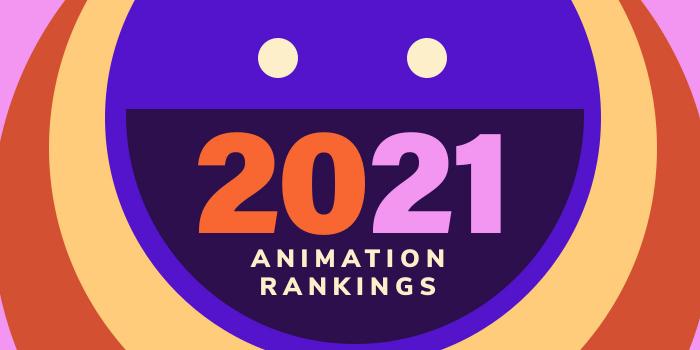
| Ranking | School | Country |
|---|---|---|
| 1 | Gobelins | France |
| 2 | Sheridan College | Canada |
| 3 | Bournemouth University | England |
| 4 | The Animation Workshop - VIA University College | Denmark |
| 5 | Rubika | France, Canada, India |
| 6 | Emily Carr University of Art + Design | Canada |
| 7 | École Supérieure des Métiers Artistiques (ESMA) | France |
| 8 | RMIT University | Australia |
| 9 | Royal College of Art | England |
| 10 | MoPA | France |
| 11 | ArtFX | France |
| 12 | Media Design School | New Zealand |
| 13 | Griffith University | Australia |
| 14 | Pearson College of London - Escape Studios | England |
| 15 | Teesside University | England |
| 16 | University of Technology Sydney | Australia |
| 17 | University of Hertfordshire | England |
| 18 | Ballyfermot College of Further Education | Ireland |
| 19 | Ontario College of Art and Design | Canada |
| 20 | ChungKang College of Cultural Industries | South Korea |
| 21 | Beijing Film Academy | China |
| 22 | Université Laval | Quebec |
| 23 | York University | Canada |
| 24 | Image Campus | Argentina |
| 25 | University of Melbourne | Australia |
Our 2021 rankings of the top international animation colleges in the world, excluding the US. For this ranking we only consider formal degree programs (bachelor's degree or equivalent). For an explanation of our ranking criteria, click here.

Gobelins, l'école de l'image (Gobelins, School of Images) was originally founded by the Parisian Chamber of Commerce and Industry (CCIP) in 1964. One of the world’s oldest animation schools, Gobelins serves more than 1,105 students (including 508 apprentices) enrolled in French Professional Baccalaureat and MA degrees in Animation, Audio and Video (Filming and Post-Production), Graphic Design, Motion Design, Photography, Printed & Multimedia Communication, Web and Mobile Design, and Video Games.
The Animation Program at Gobelins leads to a BA or MA degree in Character Animation and Animated Filmmaking. Students will earn Professional Certification in addition to the degree.
Students in the BA Program will master all digital and traditional animation techniques (2D and 3D), from pre-production to post-production, using professional methods from animation studios in France and abroad. Course highlights include 2D and 3D Digital Animation, Anatomical Drawing, Character Background and Design, Film Editing, Layout, Modeling and Rendering, Production Planning, Scriptwriting, Special Effects and Compositing, Storyboard Writing, and Sound Design.
Students will produce short films in teams from both the English-speaking and French-speaking class and mandatory internship (in France or abroad) is part of the program. The BA in Character Animation and Animated Filmmaking takes three years to complete, full-time.
The MA is a full-time program taught in English. “In addition to exercises in writing, storyboarding and complex animation (mixed techniques, interacting characters),” says the school students in the program will “participate in an open-themed end of studies film in conditions similar to a professional environment.” They will also complete a “written report on a reflective work related to an experimental project.”
Curriculum highlights include Advanced 2D and 3D Animation, Character Definition and Characterization, Filmmaking (2D and/or 3D Layout, Character and Background Modeling, Setup, Skinning, Rigging, Acting, Character and Special Effects Animation, Rendering, and Compositing), Graphic Design, Scriptwriting and Directing, Sound Design, and Storyboarding.
Students will also learn about assessing and monitoring production planning, complying with specifications, production pipelines, and teamwork. Throughout the program, production teams will have the opportunity to mix with students from the French Program in Character Animation and Animated Filmmaking. They also have opportunities to participate in workshops and projects sponsored by companies or public institutions such as BMW, DELL, Musée Picasso, the French Ministry of Justice, Netflix, Olympus, Universal Music and many others.
The MA in Character Animation and Animated Filmmaking takes two years to complete. Graduates of the Gobelins Animation Programs enjoy an 88% job placement rate within six months.

Established in 1967, Sheridan College began with just 400 students and one campus. Today, the school serves approximately 43,000 across three campuses in Ontario including Oakville, Brampton, and Mississauga.
One of Canada's premier polytechnic institutes and one of Ontario's leading postsecondary institutions, Sheridan College is known as the “Harvard of Animation.” The school offers more than 130 career-focused programs across four Faculties including the Animation, Arts & Design (FAAAD); Applied Health & Community Studies (FAHCS); Applied Science & Technology (FAST); and Humanities & Social Sciences (FHASS), and Pilon School of Business (PSB).
Sheridan’s FAAD is Canada’s largest art school. Students consist of Animators, Designers, Filmmakers, Performers, and more. Programs are offered in five areas: Animation and Game Design; Design, Illustration and Photography; Film, TV and Journalism; Material Art and Design; and Visual and Performing Arts.
FAAD offers an Honors (Hons) Bachelor of Animation and Graduate Certificates in Computer Animation and Digital Creature Animation – Technical Direction. Highlights for both programs include a collaborative and immersive studio environment, access to state-of-the-art facilities at the Sheridan Centre for Animation and Emerging Technologies (SCAET), and the opportunity to study abroad at the Dun Laoghaire Institute of Art and Design (IADT) in Ireland. Students will leave the one-year (three semester) programs with “signature demo reel,” says the school.
The Bachelor of Animation emphasizes classical principles of animation in a variety of forms, including 2D Digital, 3D and Stop Motion. The program covers the Art of Storyboarding, Life Drawing, Layout, and Digital Painting, and more. Students will have the opportunity to work collaboratively and individually from “story pitch to finished film.”
Other program highlights include the opportunity to gain professional experience during a mandatory three-month work placement and participation in Annual Industry Day, where students meet with employers from across North America.
Graduates of the Sheridan FAAD Animation Programs go on to work in television and feature animation at major studios across North America.

Bournemouth University (BU) traces its roots back to the early 1970s, when Bournemouth College of Technology was created. The school became Bournemouth Polytechnic (BP) in 1990 and Under the Further and Higher Education Act 1992, BP finally became Bournemouth University, with an inauguration ceremony on 27 November that year. Today, BU is one of the top 100 young universities in the world, with a population of more than 19,000 students.
BU houses the prestigious National Centre for Computer Animation (NCCA), which is one of just a few research-intensive animation centers in the UK. In addition, BU “is one of a small number of institutions from around the world who have been granted Houdini Certified School status by Side Effects Software,” says the school. “Houdini is an Award Winning Industry Standard VFX and Computer Animation Software taught across the NCCA framework of Undergraduate and Postgraduate courses.”
The Centre has two Animation options—BA Degrees in Computer Animation Art & Design, and Computer Animation Technical Arts. Computer Animation Art & Design “places an emphasis on the creative side of computer animation,” says the school, “combining traditional art disciplines like life drawing and cinematography with more technically focused disciplines to produce computer animation using industry-standard tools and software.” Computer Animation Technical Arts “is a unique 50/50 mix of art and science, reflecting practice relevant to the production of graphics and animation for a range of applications.”
Other program highlights include access to professional-level facilities, the opportunity to attend the annual BFX Festival, featuring talks and masterclasses by award-winning artists in the field, and the option to undertake an eight- or 30-week placement (internship), locally or abroad.
In the senior year, students will complete a final major project and dissertation, working individually or as a group, to produce a “significant body of work.”
BU – NCAA Animation graduates enjoy a near 95% employment rate (or further study) within six months of graduation. Alumni have worked on films such as Blade Runner 2049, Dunkirk, Fantastic Beasts: The Crimes of Grindelwald, Solo: A Star Wars Story, The Avengers, and many others.
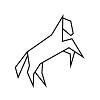
Founded in 2008, VIA University College is one Denmark’s six university colleges, covering the Central Denmark Region. The school serves 15,000 Danish and 2,800 international students enrolled in dozens of programs in the areas of Business, Design, Education, Engineering, Health Sciences, and more. Over 40 programs are offered in English.
VIA’s School of Business, Technology and Creative Industries, houses The Animation Workshop (TAW). Founded in 1988, TAW consists of seven departments, 650 students, staff and professionals, and the biggest animation festival in Denmark—Viborg Animation Festival (VAF). The School also offers a number of professional training programs for aspiring animators including BA degrees in Character Animation, Computer Graphic Arts, and Graphic Storytelling. Professional training seminars and programs that do not lead to a degree are also available.
The TAW BA in Character Animation is taught in English and may be completed in 3.5 years. Each year of the program “focuses on a progressively more complex curriculum,” says the school, that guides students “on the path toward mastery of both 2D and 3D character animation.” The program also offers hands-on experience with preproduction and productions.
The final semester of the program includes a 14-week internship with a production studio. Former students have interned at Aardmann, Cartoon Saloon, Illumination, Nørlum, Sun Creature, and many others.
The Computer Graphic Arts Program “focuses on artistic and technical areas of 2D and 3D animation film production.” The program is taught in English, and it takes 3.5 years to complete. The Graphic Storytelling BA if also taught in English, but it takes four years to complete. The program equips students “with a versatile toolbox relevant to creating comics and graphic novels, illustration, storyboarding, visual development, and more.”
Professional training programs and seminars include 3D Character Animation (3DCA) (17 weeks, 12 weeks beginning in 2022, English), the Animated Documentary Development Seminar - ANIDOX: LAB (six months, English), and Animation Sans Frontieres (six months, English).
The programs will take students through a series of assignments, lectures, and mini productions, “increasing in complexity.” The programs culminate in a final project, lasting four to five weeks. The project includes the students “showreel masterpieces—a 20-30 seconds animated short film.”
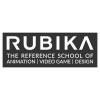
Rubika was established when three digital design schools merged: Institut Supérieur de Design (Higher Institute of Design 1988), Supinfocom (1988) and Supinfogame (2001). Today, this private school serves more than 1,300 students annually across four campuses in Valenciennes (France), Montreal (Canada), Nairobi (Kenya), and Pune (India).
Rubika has more than 5,000 alumni in over 50 countries, 100+ professional lecturers, partnerships with more than 300 companies, and 20+ partner universities. The school also has a 90% employment rate within a year.
Programs for aspiring animators include Bachelor/Master degrees in FX/VFX Special Effects, 2D Animation, and 3D Animation. Students in the programs will receive a bachelor’s degree after completion of the third year, and a master’s degree after completion of the fifth year. Program highlights include several mandatory internships, annual projects that allow students to work on project management and team management, and a final 3D Animation Project that will be presented to a professional jury.
Graduates of the Rubika Animation Programs are prepared to pursue positions such as 2D/3D Animator, CG Animator, Character Designer, Compositing Artist, FX Artist, Layout Artist/Tracking, Lighting Artist (Lighter), Modeling Artist, Rigger, Set/Environmental Artist, Shading/Texture Artist, Technical Animator, VR Animator, and many others. Potential employers include Rubika graduates include Aardman, Disney Animation Studios, DreamWorks, Framestore Pictures, Illumination Mac Guff, Industrial Light and Magic, Pixar, and more.
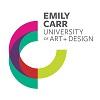
Founded in 1925, Emily Carr University of Art + Design (ECU) is one of British Columbia’s oldest post-secondary institutions, and the only one dedicated solely to professional education and learning in the Arts, Media, and Design. The school serves more than 2,000 degree-seeking students and around 1,900 non-credit students, enrolled in more than a dozen programs.
ECU has four distinct Faculties including Audain Faculty of Art, the Faculty of Culture + Community, Ian Gillespie Faculty of Design + Dynamic Media, and Jake Kerr Faculty of Graduate Studies. The Ian Gillespie Faculty of Design + Dynamic Media offers Bachelor of Media Arts degrees in 2D + Experimental Animation and 3D Computer Animation.
Students in both programs will engage in in-depth study of Animation Principles, Character Development, and Story and Production Techniques that expose them to every aspect of Animation Production. The curriculum is delivered through a mix of academic and studio classes. Both programs begin with the Foundation Year. Students will move on to their chosen major during the second year, and in both the third and fourth years, they will create two major film projects “from their own directorial vision and efforts,” says the school. To complete the projects, students will have access to the state-of-the-art Animation Studio, the Communication Design Studio, the Interaction Design Lab, and the Mixed Reality Lab.
Animation students “have the opportunity to experiment with novel mediums in digital media through faculty research projects, international collaboration projects with partner institutes, video game development projects, and experimentation with emerging technologies such as virtual reality and augmented reality.” In addition to career development workshops, the programs offer students “hands-on animation production experience in order to prepare them for life after school, whether as commercial artists or independent filmmakers.”
Graduates of the programs can pursue careers in Animation and Games, Film and Television, Advertising and Marketing, Education, Legal, Medical, and many others.
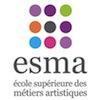
Founded in 1958, École Supérieure des Métiers Artistiques (ESMA) is a School of Applied Arts, with campuses in Lyon, Montpellier, Montreal, Nantes, and Toulouse. The school offers a Master’s in CG Animation & FX that takes three years to complete. The program focuses on “both artistic and technical knowledge,” says the school, while teaching students to master 3D software used by animation studios, production companies, and video game firms.
Students will learn animation techniques and all about the production stages of an animation project including Pre-production (storyboard, layout, screenwriting…), Production (3D modeling, rigging, compositing, 3D animation…) and Post-production (lighting, rendering, FX…). The fourth year of the fourth year of the program is exclusively dedicated to the creation of an animation short film. Students will produce their final short films in groups consisting of four to seven students.
The CG Animation & FX Master’s Program can be completed in English ESMA’s Lyons campus. Graduates of the program enjoy a 93% employment rate within six months after graduation and a 100% employment rate within just nine months.
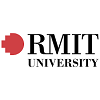
RMIT University began as the Working Men’s College in 1887. The school became RMIT University in 1992 and since then, it has merged with four educational institutions: Phillip Institute of Technology (1992), Melbourne College of Decoration and Design (1993), Melbourne College of Printing and Graphic Art (1997), and Melbourne Institute of Textiles (1999). Today, RMIT serves nearly 87,000 students, making it Australia’s largest university. In addition, this global university has an additional campus in Vietnam, and over 200 exchange partners and industry connections across Asia, Europe, and North America.
RMIT offers hundreds of programs at all degree levels in 17 schools in several academic colleges. The College of Design and Social Context (DSC) consists of seven schools, including the School of Design, which offers a Bachelor of Design in Animation and Interactive Media and a Master of Animation, Games, and Interactivity.
Students in both programs will be “immersed in specialized design laboratories and studios from day one,” says the school. All courses are taught by practicing artists, designers, and industry practitioners.
Course highlights for the three-year Bachelor of Design include 2D and 3D Animation, Animation and Interactive Media Design Effects, Animation and Interactive Media Design for Movement, Sound Design for Animation, and Visual Effects.
Course highlights for the two-year Master’s Program include Advanced Play Design, Animated Narratives, Animation, Games and Interactivity Studio (three studios), Character, Place and Simulation, Professional Preproduction, Research Methods for Design and Digital Media, and The Illusion of Life. Students will also complete a Professional Research Project and an Animation, Games, and Interactivity Industry Portfolio.
Students in this graduate program will work alongside the Australian Centre for The Moving Image (ACMI X) and they will exhibit their work at the Melbourne International Animation Festival, and have opportunities to collaborate with academic staff, industry practitioners, and RMIT research centers.
Students in both programs have access to brand new animation and game design studios, individual studio spaces, and industry partnerships with ANZ, the National Gallery of Victoria (NGV), the Australian Centre for The Moving Image (ACMI), and the Australia Post. Students also have the opportunity to exhibit in festivals and conferences such as Annecy, LIAF, MIAF, MILIA, and Siggraph.
RMIT Animation alumni work in 2D/3D Animation, App and Web Development, Character Design, Game Development, Interaction Design, Motion Graphics Design, Pre-Production Art, Visual Effects, VR/AE, Web Design, and more.
Graduates of the Master’s Program are also prepared for research positions ACMI X and the RMIT Centre for Games Design Research, which includes areas such as the Exertion Games Lab (XGL) and Creative interventions, Art and Rehabilitative Technology (CiART).
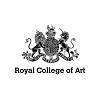
The Royal College of Art (RCA) began in 1837 as the Government School of Design. Today, RCA is the only entirely postgraduate institution of university status offering degrees in the areas of Art, Communication, Design, and Humanities. The school is home to some 2,300 students served by 450 permanent academic, technical and administrative staff, and more than 1,000 visiting lecturers and professors.
RCA consists of four schools across three sites in Battersea, Kensington, and White City. The School of Communication has been teaching Animation for more than 30 years. The school offers an MA in Animation with three Specializations: Documentary Animation, Experimental Animation, and Narrative Animation. The program consists of 240 UK credits and it takes two-years to complete, full-time.
Students in the program “animate material-based textures of painting, drawing, illustration, puppetry and sculpture, digital tools and processes or mixed media,” says the school. “Works include mimetic narrative, playful abstraction, and expanded documentary methods enhanced by carefully considered sound design.”
Other program highlights include multi-disciplinary electives, visiting artists and professionals, workshops, and experiential learning opportunities such as field trips to animation studios, exhibitions, museums, and archives. The program culminates in an Animated Film (Graduation Project) that will be presented to the Examination Board.
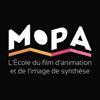
MoPA began as Supinfocom in 1988. Supinfocom was the first French school dedicated entirely to CG Imaging. In 2015, Supinfocom became MoPA. The new name and new brand reflected “the maturity of its teaching program and its independence,” says the school.
MoPA students have access to the same equipment and software used in professional studios. MoPA studios consist of 200 computers, “loaded with” 3DS Max, Nuke, Substance Painter, Houdini, and more. “A render farm contributes to the computer power necessary to produce” student films.
MoPA offers an Advanced Diploma in Animated Filmmaking. Students in the program will learn about the overall process of how a film is made. They will receive strong technical training, while working in teams to produce professional-quality films. The program begins with the Art Preparatory Year, which concludes with a portfolio that “reaffirms” the student’s career direction. During the next three years of study, students will choose a Specialization (Animation or Digital Imaging), complete an internship, and finish a CG Animated Short Film.
Graduates of Animation Program at MoPA work in all major international studios. Many graduates also return to MoPA to take part in juries, train students, work on projects, and present conferences.

ArtFX, School of Digital Arts, was established in 2004. The school, which serves nearly 500 students, is one of the few European institutions that specializes in both Compositing and Filmmaking Techniques.
Degree pathways include a Master of New Technologies of Cinema, a Master of Animation: 2D and 3D, a Master of CGI & Visual Effects, a Master of Video Game (Game Art or Game Design), and Master of Programming. A Professional Certificate in Programming for Video Games & VFX is also available.
Highlights for all programs include an advanced and innovative pedagogical program, access to high-tech equipment, and membership to a strong professional network. Students also enjoy a main campus in Montpellier—a city known as the “Métropole French Tech” thanks to “an innovative entrepreneurial ecosystem, open to Europe and the world.”
All programs include workshops, internships, presentation in front of a jury of professional artists, meetings with professional artists, and completion of a short 2D or Stop Motion Animated Film. Students will also create a demo reel, and develop and direct a Short Animated Film.
The Master’s Program is approved by the RNCP and recognized by professionals internationally.

Media Design School (MDS) was founded in 1998. When the school opened, it offered a collection of Diplomas, with MDS becoming the first tertiary institution in the Southern Hemisphere to offer a dedicated program of study in 3D Animation using industry-standard Computer Graphics software.
Today, Media Design School is a member of Laureate International Universities—a network of more than 25 higher education institutions serving more than 875,000 students—and it offers degrees in 3D Animation & Visual Effects (VFX), Advertising, Artificial Intelligence (AI), Cloud Computing, Design, Game Art & Game Programming, Graphic Design, Interactive - UX/UI Design, Media Design and Motion Graphics.
The Bachelor of Art and Design (BAD) in 3D Animation & VFX begins with the Digital Creativity Foundation Program (one year). Year two consists of work towards the Graduate Diploma of Creative Technologies. During the next three years, students will work towards the BAD in 3D Animation & VFX. Course highlights include 3D Scripting, Advanced Creature Animation, Animation and Rigging, Design Principles and Practice, Digital Art, Mechanics, Expressions and Gestures, Modeling, Surfacing, Lighting, and Visual Effects, Rendering, Traditional Art and Design for 3D and Visual Effects, Video Production, and Workflow and Principles.
Students will complete a number of Mini-Projects throughout the program as well as several Team Production courses, and Advanced Individual Production.
Graduates of the 3D Animation & VFX Program are prepared for career paths such as 3D Modeler, Animator, Compositor, Effects Designer, Technical Director, VFX Artist, and many others. Graduates of the programs have gone on to win short film awards, land positions at major studios, and work on blockbuster films such as Avatar and The Hobbit. Just few employers of program alumni include Disney, DreamWorks, LucasFilm Singapore, Microsoft UK, Warner Bros., and Weta Digital New Zealand.

Griffith University (Griffith U) was established in 1975. The school, which takes its name from Sir Samuel Walker Griffith, a former Chief Justice of Australia, was the first in the country to introduce degrees in Modern Asian Studies and Environmental Science. Today, Griffith U serves around 50,000 students from around the world, across six campuses in South East Queensland, Australia.
Griffith U offers more than 200 degree programs in everything from Aviation and Engineering to Visual and Creative Arts. Housed within the University is Queensland College of Art (QCA), one of Australia's longest-running art and design colleges, which offers a Bachelor of Animation and an Honors Bachelor of Animation.
The Honors Program consists of 80 credit points and it is designed for exceptional visual arts students looking to further develop their practical expertise and theoretical understanding to a more advanced level. The program takes one year to complete, full-time, or two years, part-time and classes are primarily on-campus, with some mixed-mode online delivery and off-campus work placements or internships.
The Bachelor of Animation consists of 240 credit points and offers majors in Art Direction, Character Animating, and Technical Direction. All students will “learn skills in concept development, storyboarding, 2D and 3D character animation, editing, sound recording, visual effects and post-production,” says the school. They will also “develop the ability to work out the most appropriate animation format for specific projects - traditional drawn animation, 2D, 3D and motion-captured digital animation, 3D puppet or clay animation and other experimental media.”
Other program highlights include hands-on experience through studio courses and engagement with industry production, the opportunity to work alongside film and screen media production and game design students to collaborate on and complete projects, and internship opportunities.
Students will also “complete work placements or in-class simulated work activities under direction as part of Introduction to Professional Practice, Industry Research and Animation Portfolio courses.” Other course highlights include Alternative Animation techniques, Animating: Acting and Performance, Animating: Mechanics and Motion, CGI Animation, Comics and Sequential Storytelling, Digital Storytelling, Interactive Storytelling, Outback Filmmaking Bootcamp, Reading the Moving Image, Scriptwriting, and Stop Motion Animation Fabrication.
The Bachelor of Animation Program takes three years to complete, full-time. Graduates of the program are prepared to pursue positions in 2D and 3D Character Animation and Visual Effects for Computer Games, Film, Interactive Media Companies, and Television Studios.
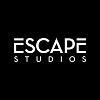
Founded in 2002, Escape Studios is part of Pearson College London (PCL)—a boutique institution offering a range of undergraduate and postgraduate degrees, degree apprenticeships, and short programs. Part of Pearson, a FTSE 100 company, PCL has more than 4,000 alumni known as “Escapees.” Many of these artists and designers have gone on launch their own studios or to work on Visual Effects (VFX) blockbusters such as Captain America: Civil War, Ex Machina, Fantastic Beasts and Where to Find Them, Gravity, Interstellar, Star Wars: The Force Awakens, The Jungle Book, and many others. PCL alumni have also worked on bestselling games such as Assassin’s Creed and Forza Horizon, and award winning advertisements.
Escape Studios at PCL offers Animation, Game Art, Motion Graphics, and VFX Programs. Degree options for aspiring animators include a BA/MArt in The Art of Computer Animation (Integrated Masters) and MA degrees in 3D Animation, Character & Creature Creation, and Storyboarding & Previsualizaiton. Short program offerings include 2D Animation with Toon Boom Harmony (12 weeks), Advanced Animation (18 weeks), Animation (12 weeks), and Storyboarding & Previsualization (12 weeks or 18 weeks).
Highlights for all programs include extensive training with industry-professional software such as Maya, and Toon Boom Harmony, classrooms and lessons that mirror real animation studios, access to tutors who have worked for Disney, DreamWorks, Fox and Warner Bros., and courses developed with industry partners such as Cinesite, Framestore, and PlayStation Studio London.
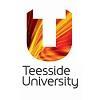
Teesside University was founded as Constantine Technical College in 1930. The school serves nearly 19,000 students enrolled in dozens of programs in five schools. The School of Computing, Engineering & Digital Technologies houses the Department of Transmedia, Digital Art & Animation, which offers BA degrees in 2D Animation and Stop Motion, Animation & Visual Effects, Computer Animation, and Computer Character Animation. At the graduate level, an MA in Animation is available.
The 2D Animation and Stop Motion BA helps students develop the skills needed “to work in the animated film and TV industry as a 2D artist, animator, stop-motion artist, model maker and compositor in animation,” says the school. The program includes an optional work placement year, at no extra cost.
The BA in Animation and Visual Effects prepares students “for a career in visual effects for film and TV.” Students in the program will “create photorealistic 2D and 3D visual effects, assets and simulations seamlessly composited into shots for film, TV and 3D animation.” The Computer Animation BA is for artists interested in the creation of 3D computer animation for film, games and TV. The program covers the “fundamental skills common to all animation roles, in drawing and pre-visualization, cinematography, asset design and modelling, 2D and 3D key frame animation and simulation.”
The BA in Computer Character Animation covers key areas such as 3D Character Animation, Look Development, Modeling, Motion Graphics, and Rigging. The MA in Animation is an intensive, practice-based program, which helps students develop skills in animated performance allowing them to “meet industry demands and developments.”
Students in all programs have access to dedicated life drawing spaces, recording and motion-capture studios, and a fully equipped soundstage including green screen facilities and motion-control cameras. Other program highlights include access to industry recruiters that routinely visit the Teesside campus, speakers from Disney, DreamWorks, Industrial Light & Magic and Pixar, and the opportunity to participate in Animex, the UK’s largest animation festival, which takes place on campus.
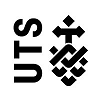
University of Technology Sydney (UTS) began as the Sydney Mechanics School of the Arts in 1833. This was the colony’s first school of art. Sydney’s largest technology university, UTS serves more than 46,000 students enrolled in hundreds of programs through nine Faculties and 25 schools.
The Faculty of Design, Architecture and Building offers a Bachelor of Design in Animation and a Master of Animation and Visualization. Both programs consist of animation studio courses, elective options, hands-on experience, and internship opportunities. Course highlights for the Bachelor of Design include Animation Studio: Advanced Animation Practice, Animation Studio: Animation Project Pre-production, and Animation Studio: Animation Project/Production.
The UTS Master of Animation and Visualization was developed in partnership with Animal Logic, and it is offered through the UTS Animal Logic Academy. Program highlights include mentoring by industry professionals, learning modeled on real-world production work structures in a custom-built digital studio, and collaborative work practices. Course highlights for the program include The Challenge Studio, The Collaboration Studio, and the Connected Studio.
Career options for graduates of the Animation Programs at UTS include Animator, Animation Scriptwriter, Augmented and Virtual Reality (AR/VR), Character Designer, Compositor, Concept Artist, Director, Editor, Effects (FX) Animator, Matchmover/3D Tracker, Modeler, Previsualization Artist (Previs) Producer, Rigger, Scriptwriter, Storyboard Artist, Rigger, Roto Designer, Stop Frame Model Animator (Claymation), and VFX Artist.

University of Hertfordshire (UH) opened as Hatfield Technical College in 1952 with 1,500 students. Today, UH serves more than 28,000 students. A large number of UH students are enrolled in the School of Creative Arts, which offers BA (Hons) degrees in 2D Digital Animation and 3D Animation & Visual Effects.
Students in the 2D Program have the opportunity to learn traditional animation techniques, work on simulated real-world briefs, and build a portfolio of their best work. Course highlights include Animated Thinking, Applying CG, Concepts in Motion: Articulated Research & Writing, Creativity, Concept & Story, Design, Interactivity & Professional Practices, Moving Visions, Pre-Production for 2D Animation, and Professional Practices & Degree Project.
Students in the 3D Animation & Visual Effects Program will learn Character Animation, Cinematography, Coding, Compositing, FX Simulations, Matte Painting, Modeling, Rigging, Shading, texturing, and more.
Students will work on live industry projects and make their first short 3D or VFX film during the second year of the program. The student’s final film project will be screened at the School of Creative Arts Animation Exposé, judged by a panel of industry experts.
Both the 2D and 3D Programs offer work placements and study abroad options at partner universities in Africa, Asia, Australia, Canada, South America and throughout Europe are also part of the program. University of Hertfordshire graduates enjoy an excellent 96.5% employment rate.
Graduates of the 2D and 3D Animation Programs “have gone on to work for a wide range of big name companies, and have won Oscars, BAFTAs and Emmys for their work on blockbusters” such as Avatar, Game of Thrones, Gravity, Harry Potter, Inception, Star Wars, The Chronicles of Narnia, The Jungle Book, and The Lion King.

Established in 1979 as the Senior College Ballyfermot (SCB), Ballyfermot College of Further Education (BCFE) is a vocational school that consists of nine academic departments. The Animation & Games Department at BCFE offers a BA in Visual Media – Animation Stream (with University of Dundee, Scotland), a Diploma in Animation & Classical Computer, and a Certificate in Animation Drawing & Illustration Studies.
The BA Program is a two-year, self-directed learning program that covers Classical and Computer Animation. Students in the program “are challenged to develop and integrate their creative, technical, and academic skills in a structured way, producing both individual and group films.” Course highlights include Applied Visual Media Theory, Design and Technology, Life Drawing, Professional Practice, Visual Media Production, and Visual Media Theory.
Collaborative student films are screened annually at the Animation and Games Graduate Showcase. Graduates of the BCFE BA in Visual Media – Animation Stream have gone on to positions at a number of Irish animation studios.
The Animation & Classical Computer Diploma is a two-year program that covers Classical Hand-Drawn Computer Animation including 3D Modeling, Character Animation, and Animating for Feature Films, TV or Games. Specific course highlights include Advanced 3D Modelling and Character Animation, Concept Design for Animation, Historical and Theoretical Analysis of Animation, Layout for Animation, Layout and Storyboarding, and Scriptwriting for Animation.
Upon completion of the program, graduates are prepared to work in Feature, TV or Computer Game Animation or to apply for entry into the BA in Visual Media – Animation Stream Program.
The Certificate in Animation Drawing & Illustration Studies is a one-year foundation program covering Animation Drawing, Animation Layout Design, Figure Studies, Painting, and Sculpture. The school says the program is designed to “enhance” the students “creativity and artistic skills,” and “provide a great introduction to the world of animation.” Students will leave the program with “a strong foundation, both technically and artistically, for further study in Classical and Computer Animation.” Graduates with a merit profile may apply for entry into the Animation & Classical Computer Diploma Program.
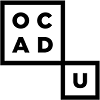
Ontario College of Art and Design (OCAD U) was originally established in Toronto in 1876 by the Ontario Society of Artists. Back then, the school was known as Ontario School of Art. Today, the school serves nearly 5,000 students, making it the largest and most comprehensive Art, Design and Media university in Canada.
OCAD U offers BFA Degrees in Drawing & Painting or Integrated Media. Both programs offer a Specialization in Digital Painting and Expanded Animation. Students in the Drawing & Painting option will “focus on digital media and painting including traditional painting techniques, digital tablet painting and animation,” says the school. In the Integrated Media Program, students will “focus on traditional and digital animation.”
Course highlights for the programs include 3D Modeling and Animation, Advanced Compositing, Animation: Stop-Motion, Body and Technology, Character Design and Animation, Intermediate Animation Studio, Paint and Digital: Collaboration, Paint and Digital: Production, Printing and Digital Imaging, Sound Design, and Wearable Art.
The entire senior year of both programs will be devoted to the student’s thesis project, which will be showcased at GradEx—OCAD U’s Graduate Exhibition. The school describes the event as the “biggest free art and design exhibition in Toronto with more than 40,000 visitors.”
Other highlights for the Animation BFA Programs at OCAD U include creative in-class projects with real-world industry partners, exclusive summer internships, freelance creative opportunities, gallery exhibitions of student work, short experiential learning placements from among hundreds of organizations, and employment after graduation.
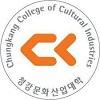
ChungKang College of Cultural Industries (ChungKang) opened in 1996 as the country’s first college to focus primarily on the cultural industries. Today, ChungKang houses seven specialized schools that incorporate “practical curriculums, studio-based creative production, practical project courses, overseas internship programs, and interdisciplinary, convergence-based education,” says the school. ChungKang also houses one Department—The Department of Early Childhood Education—and Schools include Animation, Culinary Arts, Fashion Makers and Style, Game, Manhwa (Comics & Cartoons), Mobile IT, and Musical & Theatre.
The Schools of Animation and Manhwa (Comics & Cartoons) offer BA degrees in Animation and Manhwa. In both programs, students will complete three years of study before entering the one-year intensive program leading to the BA. The three-year sequence has a maximum of 180 students. The on-year intensive program has a maximum of 50 students.
The Animation Program “offers a project based curriculum encompassing all aspects of animation, including planning, directing, production, and post-production.” Students will complete a project and presentation or a thesis to complete the program and earn the BA in Animation.
The BA in Manhwa “comprises highly specialized major courses and a variety of liberal arts courses.” Program highlights include critique classes, held every semester, recruiting sessions each semester with invited guests from digital platforms and publishing companies, and access to state-of-the-art manhwa production equipment and facilities including a cartoon studio, cartoon production rooms with liquid crystal tablets, and figure-drawing and printing rooms
Students in both programs also have access to a computer lab, tutoring program and additional facilities, including the largest animation studio in Korea, a render farm, and a sound recording studio.

Beijing Film Academy (BFA) was established in 1950 as the Performance Art Institution of the Film Bureau of the Ministry of Culture. When it opened, the school had just 38 students. Today, BFA serves more than 2,300 students and it is the only film academy in China and the largest film academy in Asia.
Equipped with four professional studios and hosting many of Asia’s top film festivals, BFA houses 15 departments and schools.
Established in 2000, the Animation School began as a single Animation major in the Department of Fine Arts of BFA. The first school of animation ever established in the field of higher education in China, the Animation School serves 350+ students enrolled in BA, MFA, and PhD Animation Programs.
Course highlights for the BA Program include Art of Animation, Comics, Computer Animation, and Game Design. In the final year of the program, students may participate in an exchange workshop with the Korean Academy of Film Art (KAFA) or the Netherland Film Academy (NFA). A Thesis Film is also part of the program along with the opportunity to compete for the Cinerent Award. Presented by Cinerent Beijing Ltd., the goal of the award is to support and encourage high-quality film projects.
The MFA in Animation has Specializations in Art Design and Film. Research areas for the program include Animation Product Design, Anime Planning, Game Design, and Stop-Motion Film. The PhD in Animation focuses on interdisciplinary studies during the first year, and Animation during the second. The research area for the program is Research on Animation Theory.
Students in all programs benefit from BFA’s long-term cooperative relationships with the major TV stations, studios, and media services both at home and abroad. Graduates of the programs are prepared to pursue positions in all areas of Animation, Film, Gaming, Television, Visual Effects, and more.
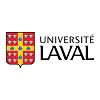
Founded in 1852 Université Laval serves 43,000 students enrolled in more than 500 programs in 17 faculties and over 60 departments, schools, and institutes. The Faculty of Planning, Architecture, Art and Design houses the School of Design, which offers a BAS in Animation (BASA). A Certificate in the Art and Science of Animation is also available. This 100% online program allows students to acquire basic skills in 2D and 3D Animation.
The BASA consists of 90 credits taken during six sessions over three years, full-time. The program highlights a project-based learning approach and the opportunity to work with multidisciplinary teams comprised of students studying architecture, biology, history, law, medicine, museology, music, and physics, to name a few. This allows the BAS student to focus in areas such as development of building construction or 3D decoration plans, medical animation, legal animation, development of simulation programs, aeronautical flights, and historical restitution.
Students in the program will also acquire skills in 2D and 3D Animation, Character Creation, Creation of Immersive Environments, Interactive Tool Design, and more. They will have access to a digital video and sound capture and editing laboratory, an entertainment room with green screen, and a motion capture and facial capture system.
At the end of the BASA program, students will have a professional portfolio of their best work. They will have the opportunity to participate in event that will allow them to meet with a variety of employer’s in the animation industry. The event is organized by graduates in collaboration with the Laval University Placement Service (SPLA), which provides personalized career support up to one year after graduation.
BASA graduates are prepared careers in Animation, Cinema, Television and Video Games.

York University (York U) was established in 1959. With more than 55,000 students, York U is the third largest university in Canada. The school offers more than 200 undergraduate and graduate degree programs in more than 10 colleges and schools.
Aspiring animators may choose to be a student in the School of the Arts, Media, Performance & Design (AMPD) or the Lassonde School of Engineering, where they will earn a BA in Digital Media Arts (DMA). This is Ontario’s only degree program that integrates Art, Computer Science, and Engineering.
While required courses for all DMA students are the same, students in the Lassonde School of Engineering will likely choose their electives from Computer Science or other areas of sciences to dig into Artificial Intelligence, Data Mining, Graphics and Visualization, Robotics, User Interfaces, and Virtual Reality.
AMPD students will likely choose their electives from AMPD courses, where they can collaborate and explore Art, Media, and Performance “in all their expanded formats,” says the school.
Both AMPD and Lassonde students will learn about the “raw tools that help create digital imagery and sound, including animation and 3D simulations,” says the school. Three Specializations are offered DMA, Digital Media Development (DMD), and Digital Media Game Arts (DMGA). Course highlights include 3D Computer Graphics, Building Interactive Systems, Fundamentals of Digital Media Studies, Introduction to Interactive Digital Media, Introduction to Virtual Reality, and Programming for Digital Media. Internship opportunities are also part of the program.
Graduates of the program are prepared for positions such as Animator, Artificial Intelligence Software Developer, Cartoonist, Film Effects Developer, Illustrator, User Experience and Interface Design, Game Developer, New Media Artist, Social Media Manager, Special Effects Director, and many others.

Image Campus celebrated its 20th Anniversary in 2020. That same year, the school achieved designation as the first Unreal Training Center (ATC) in Latin America, thanks to a five-year relationship with one of the world’s most popular gaming companies—Epic Games.
Image Campus offers professional training programs leading to a certificate and professional degrees in new technologies. Programs are delivered face-to-face or online and via streaming. Professional training programs take four to nine months to complete, and degree programs can take up to three years to complete.
For 2021, Image Campus is on track to add professional training programs in Visual Effects (VFX) and Concept Art as well as a postgraduate degree in Immersive Technologies. Curriculums for Image Campus programs are developed in collaboration with creative professionals, major companies, and the audiovisual industries.
Some 40+ current program options offered by Image Campus prepare students for careers in 2D/3D Animation, Applied Development, Design, Illustration, Immersive Technologies, Programming, Robotics, Videogames, and more.
Image Campus students interested in Animation “will learn the fundamental concepts of the twelve principles of traditional animation (Disney) governing the production of cartoons to give life to different items and characters.” Courses include Acting, Character Animation, Drawing Tools for Animation, Human Locomotion, Storytelling, Sound, and more. Students also have access to workshops, seminars, and internship opportunities.
In addition to work experience gained from the internship, animation graduates will leave the program with a professional demo reel or portfolio.
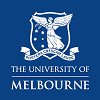
University of Melbourne was established in 1853. When it opened, the school had four professors and just 16 students. Today, University of Melbourne has more than 8,000 academic and professional staff serving a student body of more than 48,000, including more than 13,000 international students from over 130 countries around the world. The school offers hundreds of programs across eight campuses and in dozens of faculties, departments, and schools.
University of Melbourne’s Faculty of Fine Arts and Music houses the Victorian College of the Arts (VCA), which offers a BFA in Animation. The program “provides an immersive and experiential education, focusing on the origination and development of animated projects for a wide range of screen contexts and audiences,” says the school. Students will study and create in a studio-based environment that allows them to collaborate with students within the Film and Television programs and programs across Design, Music, Performing Arts, Production, and Visual Art.
Course highlights for the program include Animation Lab, Animation Studio, Collaborative Production, and Writing Animation. During every year of the BFA Program, students will produce an animated short film, written, directed, animated, sound designed and edited entirely by the student.
Graduates have established careers as Animation Artists for the Art and Entertainment Industries including Community Arts, Film, Games, Information and Advertising, New Developments in Media and Exhibition, Motion Graphics, Screenwriting, Storyboard Art, and Television.